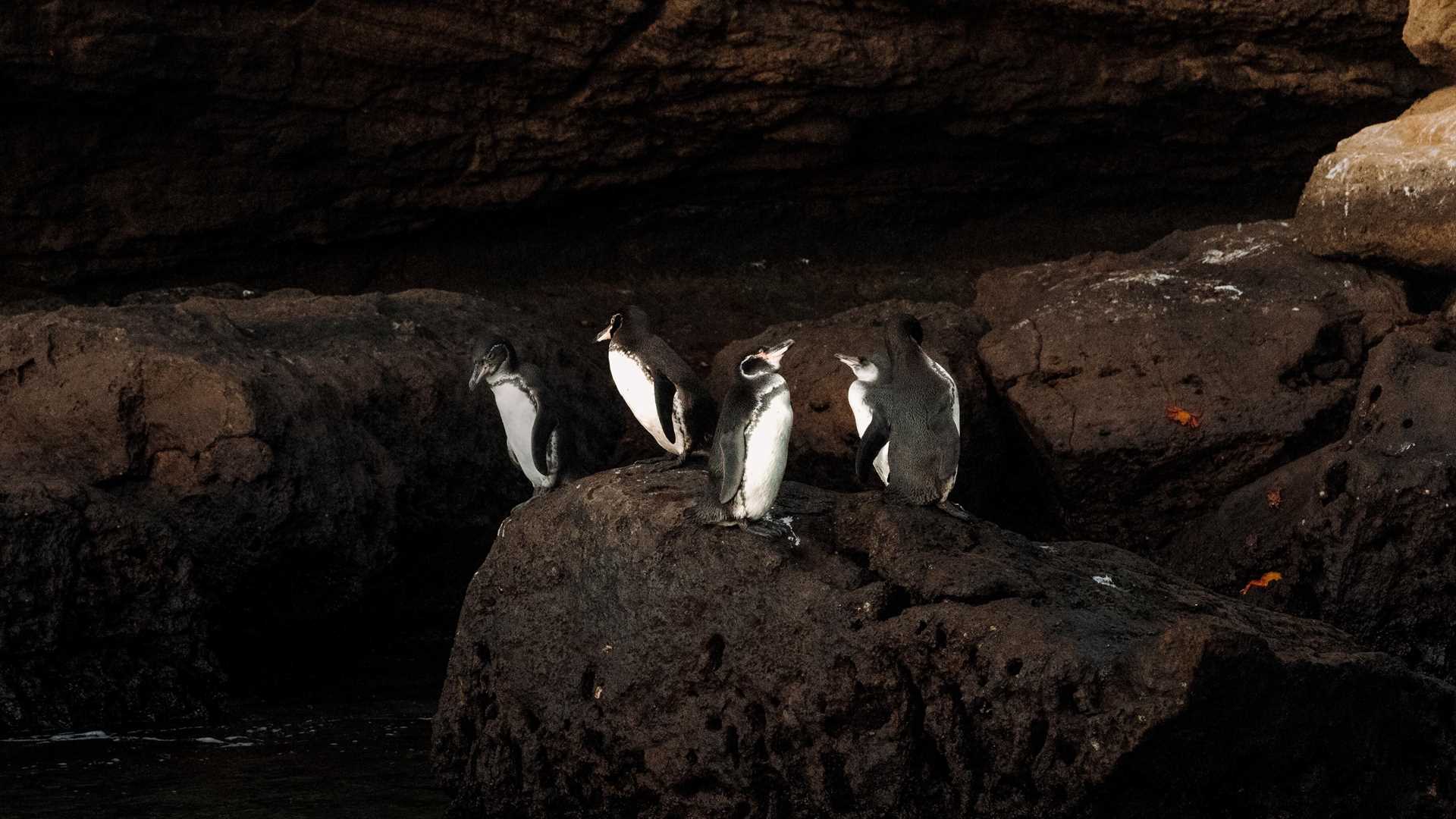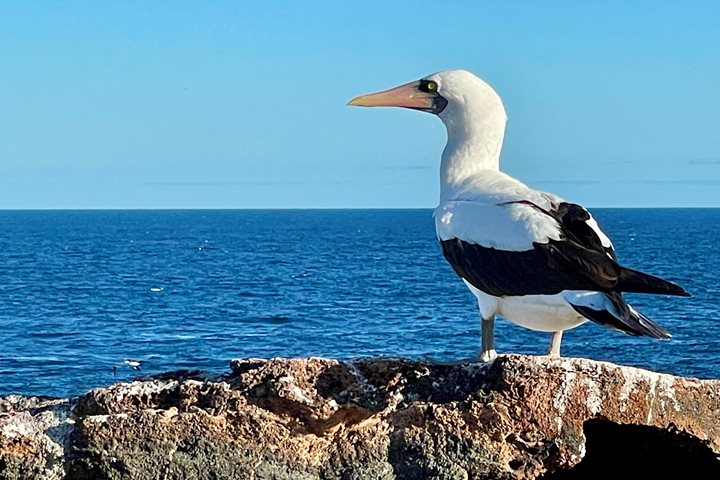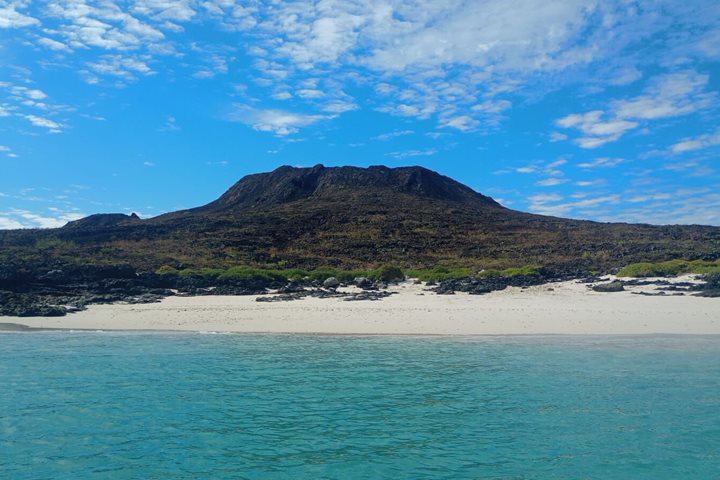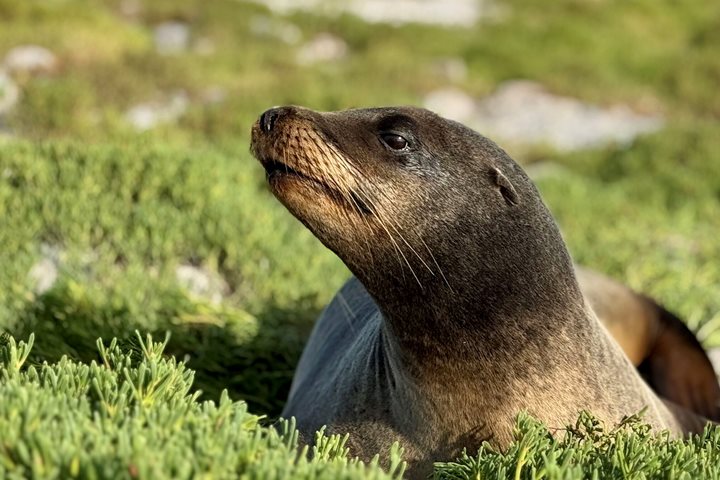Today we visited the iconic Sombrero Chino islet and its beautiful turquoise waters, and the stunning lava flows at Sullivan Bay. We started our morning with a pre-breakfast stretch class on the beach, surrounded by sea lions and Galapagos penguins! After breakfast we enjoyed a Zodiac exploration, as well as some kayaking and snorkeling — it was all about enjoying the stunning elements and wildlife that the area provides. During the afternoon we headed to Sullivan Bay to witness one of the most spectacular landscapes that the Galapagos has to offer, where we had fun learning and hiking on the lava fields. We ended the day with a coastal exploration aboard our Zodiacs. What a spectacular day we had in the Galapagos!!
- Daily Expedition Reports
- 15 Nov 2024
Sombrero Chino and Sullivan Bay, 11/15/2024, National Geographic Islander II
- Aboard the National Geographic Islander II
- Galápagos
Roberta Schiess, Naturalist
Born and raised in the Galápagos, Roberta Schiess Bahamonde’s grandparents were among the first permanent inhabitants of Santa Cruz Island, arriving from Switzerland in the 1940s. Her mother is also a naturalist guide in the Galápagos, so this is a p...
Read MoreShare Report
Galápagos Escape: A 7-Day Voyage
VIEW ITINERARYRelated Reports
6/13/2025
Read
National Geographic Islander II
Santiago Island
We started our day early in the morning at Chinese Hat. As our kayaks glided in the water, we had our first opportunity to watch Galapagos penguins swimming beside us. As we got closer to the shoreline, lava herons and blue-footed boobies stood motionless on the lava, watching our groups pass. In the late morning, we had the opportunity to have a very intimate moment with Galapagos penguins while they were hunting black-striped salemas. Penguins swam back and forth, trying to get as many fish as possible. The lunar landscape of Chinese Hat gave us an opportunity to observe the candelabra cactuses that grow on this recently formed lava field. In the afternoon, our expedition took us to Sullivan Bay. During a hike, we enjoyed one of the most amazing lava landscapes in the Galapagos. The visitor site invited us to think deeply about the genesis of life in the Galapagos Islands and how plants and animals arrived and established themselves here. As we returned to the ship, a beautiful sunset invited us to reflect on the geological and geographic qualities that make the Galapagos truly unique.
6/12/2025
Read
National Geographic Islander II
South Plaza and Santa Fe Islands
Our expedition on board National Geographic Islander II took us to the captivating South Plaza and Santa Fe Islands. We were treated to an extraordinary day of wildlife encounters and breathtaking landscapes, leaving us with a deeper understanding of the island’s unique ecosystems.







